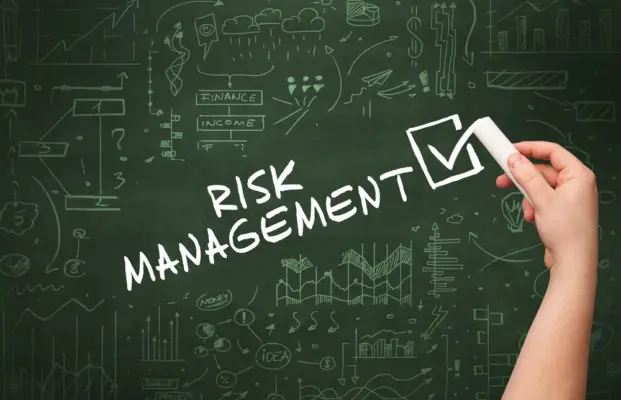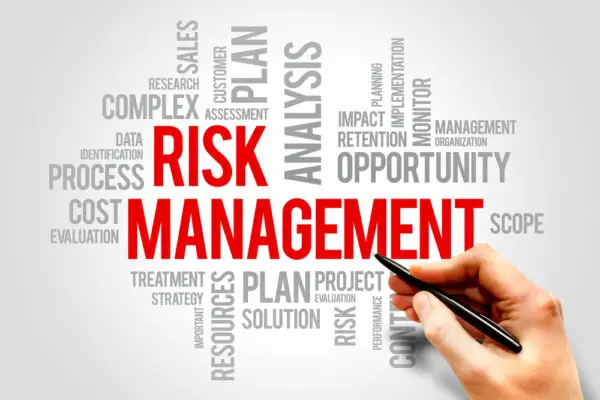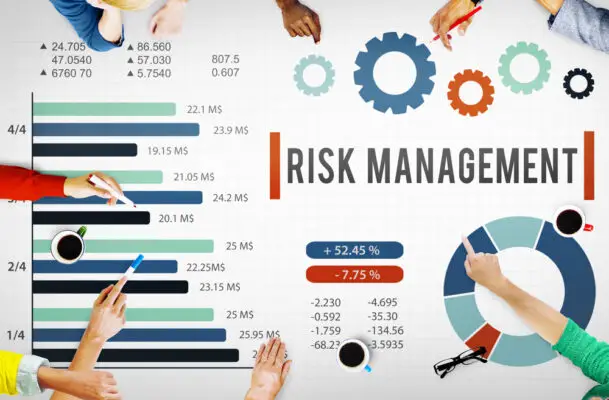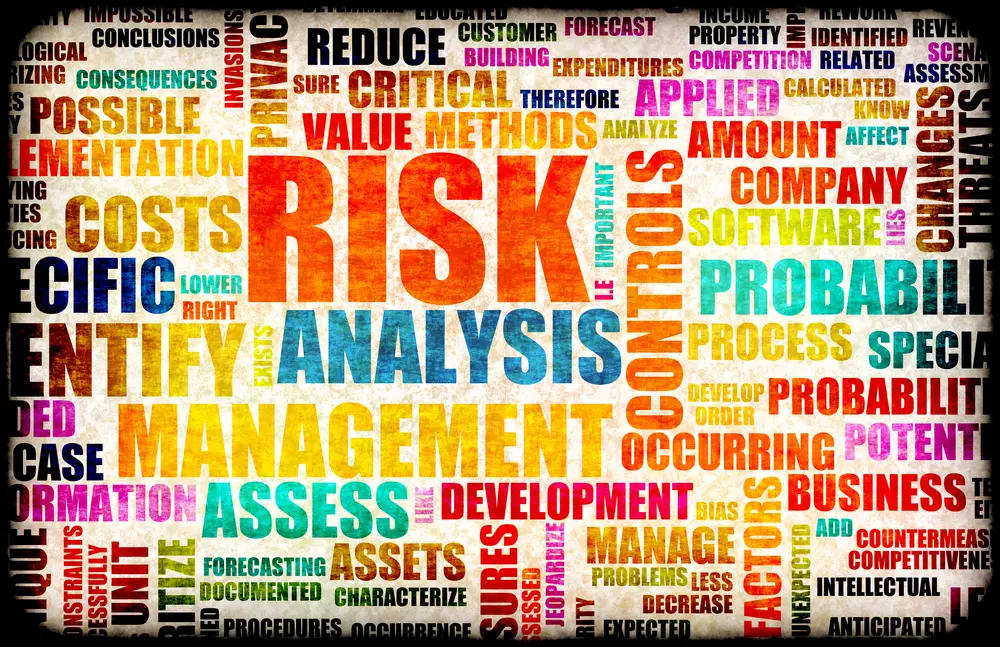Risk and hazard are two key terms used in the realm of safety and risk management, and while they’re often used interchangeably in everyday language, they have specific meanings in this context.
A hazard is a potential source of harm or adverse health effect on a person or persons. For example, in a workplace setting, a hazard could be an unguarded saw, a chemical substance, noise, a repetitive task, or stress.
The nature of hazards can be physical, chemical, ergonomic, or psychosocial. They might be inherent in certain substances or activities or arise when materials or equipment are used improperly or in an unsafe context.
On the other hand, risk is the probability that a person will be harmed or experience an adverse health effect if exposed to a hazard. It may also apply to situations with property or equipment loss or harmful effects on the environment.
Risk typically incorporates both the likelihood of a hazardous event and the potential severity of the resulting harm.
In other words, a hazard represents the potential for harm, while the risk is the likelihood of the harm occurring, given exposure to the hazard.
Both concepts are fundamental in risk management and occupational health and safety, guiding measures to prevent accidents, illnesses, and other negative outcomes.
Consequently, hazards may be termed as things or situations that have the potential to cause harm, while risks are the likelihood of harm occurring when exposed to a hazard.
For example, a slippery floor is a hazard, and the risk of slipping and falling increases if you are wearing inappropriate footwear or not paying attention to your surroundings.
Managing hazards and risks is crucial in the workplace. This involves identifying potential hazards, assessing their associated risks, and implementing measures to control or eliminate them.
In this article, we will explore the importance of managing hazards and risks in the workplace and provide information on risk management approaches, safety resources, and key points for managing hazards and risks in the mining and petroleum industries.

Overview of Hazards and Risks
Hazards and risks form the foundation of many decision-making processes like safety management, public health, environmental protection, and financial planning.
They have distinct definitions but are interrelated and are key considerations when evaluating potential threats or opportunities.
Hazards are anything that has the potential to cause harm. They can be present in any environment and can take many different forms, including physical hazards (e.g., dangerous machinery, hazardous substances), biological hazards (e.g., viruses, bacteria), ergonomic hazards (e.g., poor posture, repetitive motion), and psychological hazards (e.g., stress, violence).
Risks, on the other hand, refer to the likelihood that exposure to a hazard will lead to negative consequences, along with the severity of those consequences. This could range from minor injuries or disruptions to severe harm or catastrophic events.
Risk considers two main factors: the probability of an adverse event occurring and the impact if it does occur.
Risk management is the process that puts these two concepts into action. It involves identifying and assessing hazards, determining the associated risks, and implementing measures to mitigate them.
This could involve removing the hazard entirely, reducing exposure to it, implementing safety measures, or accepting the risk if it’s deemed acceptable compared to the benefits.
Additionally, a workplace inspection checklist can be used to identify hazards. It’s essential to take a proactive approach to identify hazards in the workplace to prevent harm and improve business.
Risk Management Process
Let’s dive into how to keep our workplace safe and prevent unwanted incidents. Risk management is a process that involves identifying, assessing, controlling, and reviewing control measures for hazards.
This process helps improve business by preventing injuries and illnesses, improving workers’ health and well-being, and improving the quality and productivity of work. Managing risks involves a step-by-step approach that prioritizes higher-risk hazards and uses a risk matrix to determine risk levels.
Controls can be put in place to eliminate or minimize risks associated with hazards. It’s important to take a proactive approach to identify hazards and manage risks in the workplace.
The Model Code of Practice for managing work health and safety risks and other supporting information can be used to assist in this process.
Remember, hazard management is essential to prevent harm and improve business.

Safety Information and Resources
Recovery Partners provides general safety information, including a downloadable safety glossary to differentiate safety terms. There is also a link to additional information on the Safework Australia website, where organizations download templates and instructions.
However, it’s important to note that the provided information and products shouldn’t be relied upon as legal or professional advice. Recovery Partners doesn’t accept liability for any loss or damage arising from reliance on the contents of the website or products.
Proactive Approach to Safety
Take charge of workplace safety by actively searching for potential dangers and implementing measures to prevent harm. This can involve conducting regular workplace inspections, providing proper employee training and equipment, and implementing risk control measures to reduce unwanted events’ likelihood and potential consequences.
Businesses can do wonders for their workers’ health and the quality and productivity of their work by recognizing the most hazardous risks and regularly reassessing their controls.
Taking the time to prioritize high-risk hazards is an investment that pays off in numerous ways. Not only does it help keep employees safe, but it also helps boost quality and output.
Remember, taking a proactive approach to safety prevents injuries and illnesses, helps respond to change, and ultimately improves the success and longevity of the business.
Concepts Related to Mining and Petroleum Safety
it’s important to stay up-to-date with the new Work Health and Safety laws and utilise the various online resources available to ensure compliance and promote safety.
The government website offers a range of tools and systems, including the Royalties Online System and GeoVIEW.WA, Mineral Titles Online, WAMEX, EARS Online, Safety Regulation System, WAPIMS, and TENGRAPH.
These resources provide access to exploration reports, geological mapping, environmental applications, and other relevant information to help manage risks and ensure the safety of workers.
It’s crucial to be aware of any transitional arrangements and to contact the state or territory work health and safety authority for help if needed.
Frequently Asked Questions
What are some common misconceptions about hazards and risks in the workplace?
One common misconception is that all hazards are risks, but this isn’t always the case. Another is that hazards can be eliminated completely, when in reality they can only be controlled or minimized.
Remember, managing risks involves a step-by-step process of identifying, assessing, controlling, and reviewing control measures.
How do different industries approach risk management and safety practices?
To stay in control and maintain power over your workplace, it’s essential to approach risk management and safety practices proactively.
Different industries have their unique approaches, but the key is to identify, assess, control, and review hazards continually.
Managing risks is not just about compliance but also about improving business and responding to change. So, prioritize higher risk hazards, take action to eliminate or minimize them, and stay up to date with national policies and regulations.
What are some practical tools or resources for conducting a hazard assessment in the workplace?
Checklists: These are common and simple tools that guide you to look for various potential hazards in the workplace. There are several types of checklists available that cater to different industries and types of workplaces.
Job Hazard Analysis (JHA) or Job Safety Analysis (JSA): This is a technique that focuses on job tasks as a way to identify hazards before they occur. It focuses on the relationship between the worker, the task, the tools, and the work environment.
Risk Assessment Matrix: This tool allows for the visual representation of the risk level of specific hazards. It helps in prioritizing the hazards based on the severity of their impact and the likelihood of their occurrence.
Safety Data Sheets (SDS): If your workplace uses or stores chemicals, SDS are an essential resource. They provide detailed information about each chemical, including its potential hazards, safe handling practices, and emergency procedures.
Inspection tools and measurement equipment: Devices like gas detectors, sound level meters, and thermal imaging cameras can be used to detect and quantify hazards that may not be obvious to human senses.
Software Solutions: There are various hazard assessment software available that can streamline the process of identifying, tracking, and managing workplace hazards. These solutions often provide additional features like task management, incident reporting, and analytics.
Regulatory Agencies and Professional Organizations: Resources like the U.S. Occupational Safety and Health Administration (OSHA), the Canadian Centre for Occupational Health and Safety (CCOHS), and the National Institute for Occupational Safety and Health (NIOSH) offer guidelines, tools, and resources for conducting hazard assessments. They also provide training courses and consultation services.
Are there any legal or regulatory requirements related to hazard identification and risk management?
The Work Health and Safety (WHS) laws mandate that all hazards must be managed to prevent harm and improve business. Under these laws, PCBU, designer, manufacturer, importer, supplier, installer of plant, substance, or structure, and officers are responsible for managing WHS risks through a step-by-step process of identifying, assessing, controlling, and reviewing control measures.
Safe Work Australia develops national policy relating to WHS and workers compensation, while the Commonwealth, states, and territories regulate and enforce WHS laws.
To ensure compliance, contact your state or territory work health and safety authority for help.
How can organizations ensure ongoing compliance and continuous improvement in their safety practices?
This involves regularly conducting workplace inspections using a checklist to identify potential hazards. Once hazards are identified, it’s crucial to prioritize higher risk hazards and take action to eliminate or minimize them by implementing appropriate control measures.
Remember, managing risks not only prevents harm but also improves the quality and productivity of work, ultimately improving your business.
Stay informed by accessing relevant codes of practice, seeking advice from state or territory work health and safety authorities, and regularly reviewing and updating your safety practices.

Conclusion
To effectively manage risks, it’s essential to follow a risk management process, which includes identifying, assessing, and controlling hazards. It’s also crucial to have safety information and resources readily available to employees and to take a proactive approach to safety by regularly identifying and addressing potential hazards.
In industries like mining and petroleum, where hazards and risks are prevalent, it’s even more critical to have proper safety measures in place. You can create a safer and healthier workplace for all employees by implementing effective risk management strategies, providing safety information and resources, and taking a proactive approach to safety.
Remember, the well-being of your employees should always be a top priority.

Chris Ekai is a Risk Management expert with over 10 years of experience in the field. He has a Master’s(MSc) degree in Risk Management from University of Portsmouth and is a CPA and Finance professional. He currently works as a Content Manager at Risk Publishing, writing about Enterprise Risk Management, Business Continuity Management and Project Management.

